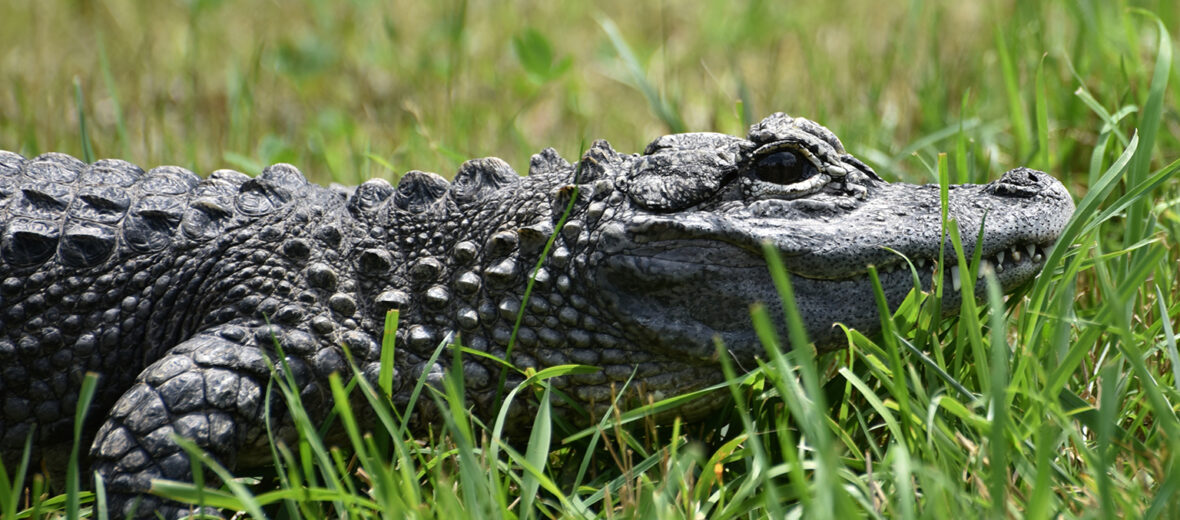
The Chinese alligator is 1 of the smallest crocodilians and the smallest of the 2 known alligator species. They are also known as China alligator, Yangtze alligator, or the muddy dragon. Once distributed throughout the eastern part of China’s Yangtze River system, these gators have now dwindled down to a mere 269 square mile reserve in the Anhui province in the lower Yangtze and in some parts of the provinces of Jiangsu and Zhejiang. They inhabit temperate, subtropical regions, in swamps, wetlands, lakes, ponds, freshwater rivers, and streams. Due to habitat destruction, hunting/poaching, and water pollution these small gators are listed as Critically Endangered by the IUCN. There are only an estimated 500 or less left in the wild!
First the Stats…
Scientific name: Alligator sinensis
Weight: Up to 85 lbs.
Length: Up to 4.9 feet
Lifespan: Up to 70 years
Now on to the Facts!
1.) In summer months, these diminutive gators are nocturnal (active at night).
2.) The Chinese alligator brumates in burrows in winter.
3.) The young communicate via subtle yelps whereas adults communicate via bellowing. Bellowing causes an almost ultrasonic vibration in the water and is used to indicate their location and to attract a mate. Adults also slap the water with their lower jaws and snap their jaws together when angry.
4.) In the late 1200s Marco Polo was the first person outside of China to write about the alligator, when he came to China.
5.) Being ectothermic (get their heat from external sources), these critters use both the sun and warm water to thermoregulate (regulate their body temperature).
But wait, there’s more on the Chinese alligator!
6.) They prey on fish, clams, snails, water fowl, small mammals, and the occasional turtle. Young gators feast on insects and other invertebrates.
7.) These gators are polygynous (males mate with more than 1 female).
Did you know…?
One way alligators differ from crocodiles is that the 4th mandibular tooth rests in a socket when the mouth is closed and can’t be seen. For more on alligators and crocodiles check out my other article, Alligators vs. Crocodiles.
8.) Both males and females have a musk gland underneath their lower jaw that produces a scent that is used in mating.
9.) Mating takes place in June and up to 40 eggs are laid in July.
10.) Females build a nest, out of mud and vegetation, near her burrow and she guards the eggs till they hatch.
But wait, there’s still more on the Chinese alligator!
11.) The gender of a Chinese alligator is determined by the temperature of the nest. Cooler temps (82°F+) yield more females, where warmer temps (91°F+) yield more males. Temperatures of 87°F produce even numbers of males and females.
12.) The name “alligator” comes from the Spanish words “el lagarto,” which means “the lizard.”
13.) The bite of an alligator is among the strongest in the animal kingdom. But the muscles that are used to open the jaw are very weak and human hands or a simple strip of duct tape can keep them from opening their tooth-filled jaws.
14.) This species digs extensive tunnels with multiple chambers, entrances, and even pools.
Now a Short Chinese Alligator Video!
Also, check out the Critter Science YouTube channel. Videos added frequently!
Want to suggest a critter for me to write about? Let me know here.



